What the heck is BBF and why would I want to use it?
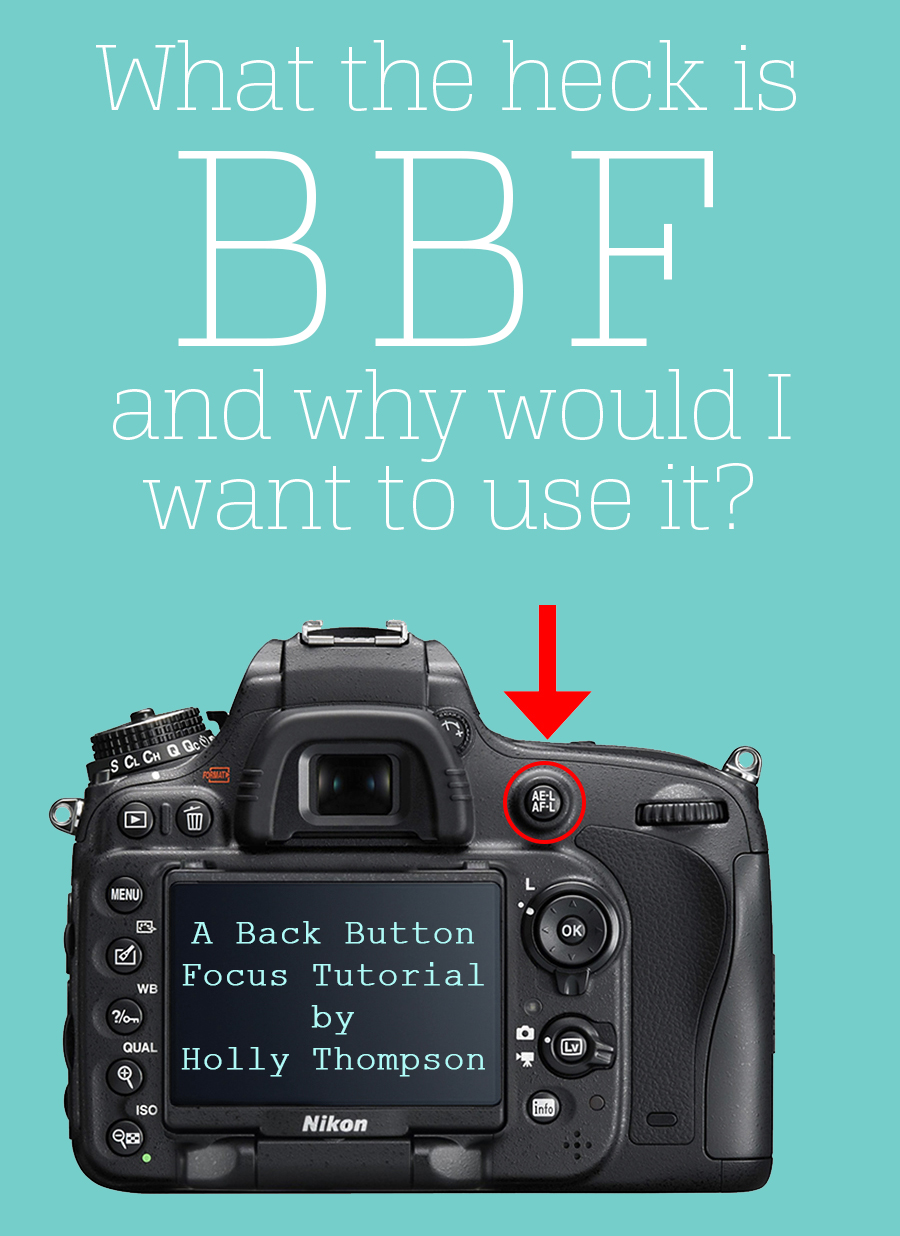
Four years. It’s taken me four years to try BBF on my camera.
I don’t know why I had such a brain block about this focus option… this is easy! And I hope you try it because you read this and think it’s easy too.
What is BBF? BBF = Back Button Focusing. You know how you have to depress your shutter button a little for your lens to focus? You don’t have to do that! You simply assign that function to another button, usually one on the back of the camera. That’s it. The shutter button then becomes just taking the picture.
I am a Nikon shooter and I started on a D40 years ago. I took Lynne Rigby’s Photography Fundamentals: From Auto to Manual Mode class (then called Rock Your Camera 101) and tried to figure out BBF during class. I failed. I completely ignored it as an option until recently upgrading to the D750 from the D700. I was watching a wedding photographer’s video tutorial about the Movie menu within my new camera. BBF is a setting he had changed from the factory default of shutter release so I decided to try it. (FYI, if you have the Nikon D750 and the Sigma 35mm f/1.4 Art lens, they will NOT autofocus together on video mode without a firmware update to your lens. Message me if you want details.)
If you aren’t familiar with BBF, the gist of it is that you assign the act of focusing (usually depressing the shutter button release part-way) to another button on the back of your camera, usually the AF-ON button (which comes standard on some cameras!) or the AE-L/AF-L button. Psst… know what? You can assign it to the front or anywhere really if your camera allows you. *More on that later.
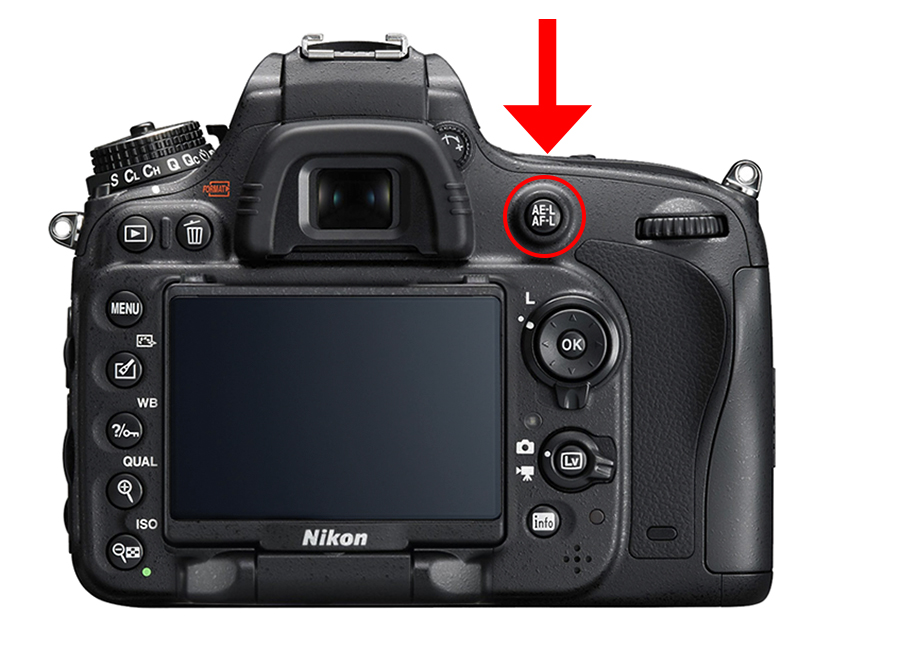
Camera image source: nikonusa.com
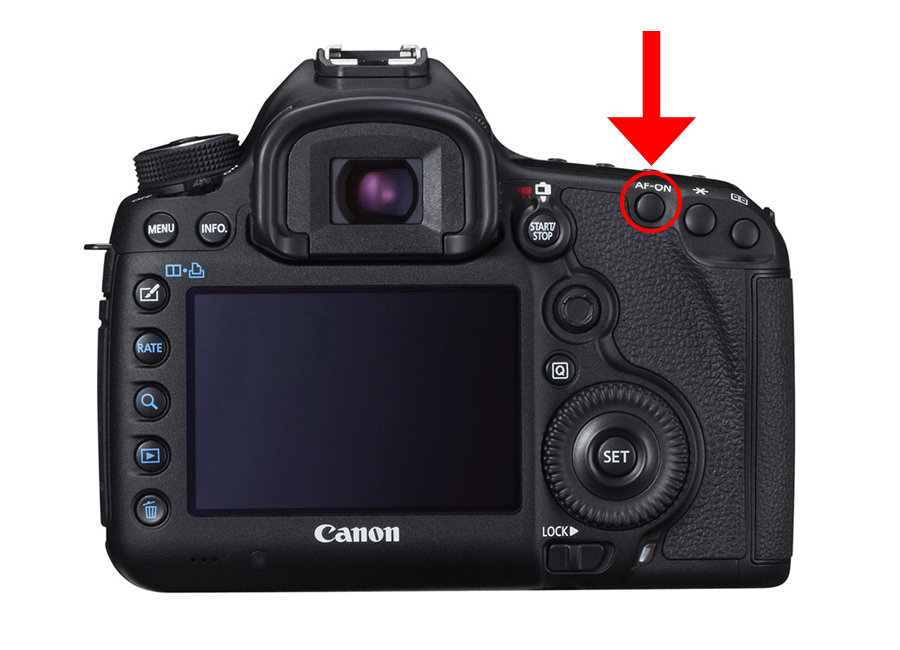
Camera image source: learn.usa.canon.com
What are the advantages of BBF?
- Faster shooting with static subjects: you can lock focus with the AF-ON button once then let go of the button for subjects that don’t move. Great for landscapes, macro, even sleepy newborns. No need to refocus every time you press the shutter.
- Easier to focus and recompose: you can lock focus using your center focal point with the AF-ON button then let go of the button and recompose your image very easily without having to re-do your focus each and every time you press the shutter. Useful for Canon cameras with limited focal points or if your initial composition isn’t optimal.
- Better focus for moving subjects: you can shoot continuously with the AF-ON button depressed and your focus will track your moving subject.
- Override and fine-tune autofocus: you can ensure tack sharp images when using Live View and zooming your focal point in to 100%, then locking in that focus by using the AF-ON button. You can even adjust your focus manually by turning your focus ring on the lens without turning the switch to MF on the front of the camera (if required).
- And finally, and this is the HUGEST advantage I’ve found, you never, ever need to change your auto focus mode again. Setting it to AF-C/AI Servo AF and using BBF allows you to access all of the focus modes with this one button. BBF eliminates the need for switching focus modes between AF-S/One Shot, AF-C/AI Servo, and AF-Auto. BBF makes AF-C/AI Servo AF usable for both moving and stationary subjects. Wow, right?!
Let me show you some examples…
For this image, I was taking various macro shots of this sleeping newborn baby boy and focused once on his lips. Then I shot different points of view and perspectives of his kissable lips until I got the composition that was most appealing to me.
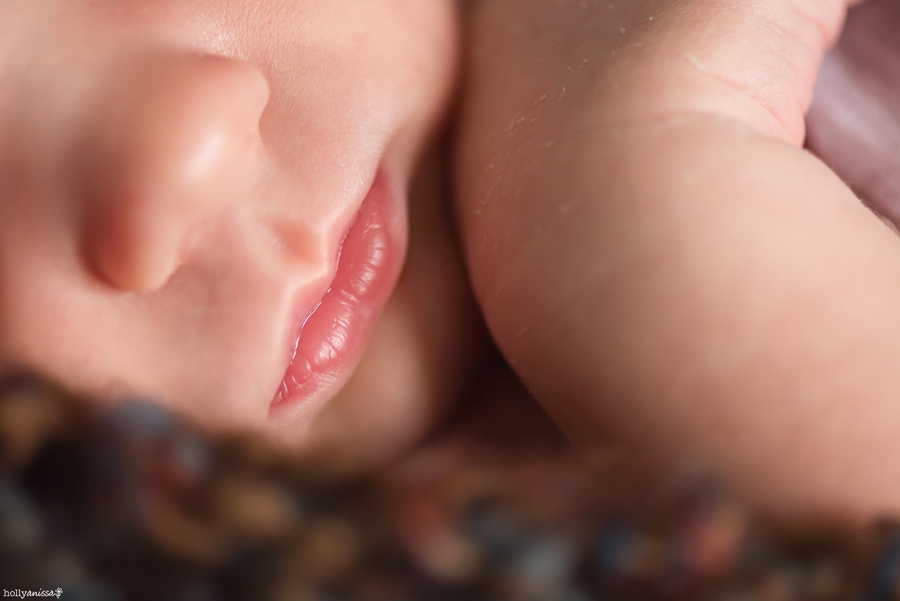
For this image, I wanted the sun’s rays to be part of the image, but didn’t want to see the sun itself. I locked focus on the slice of frost at the top of the fence line, then recomposed so that the sun was just out of frame.
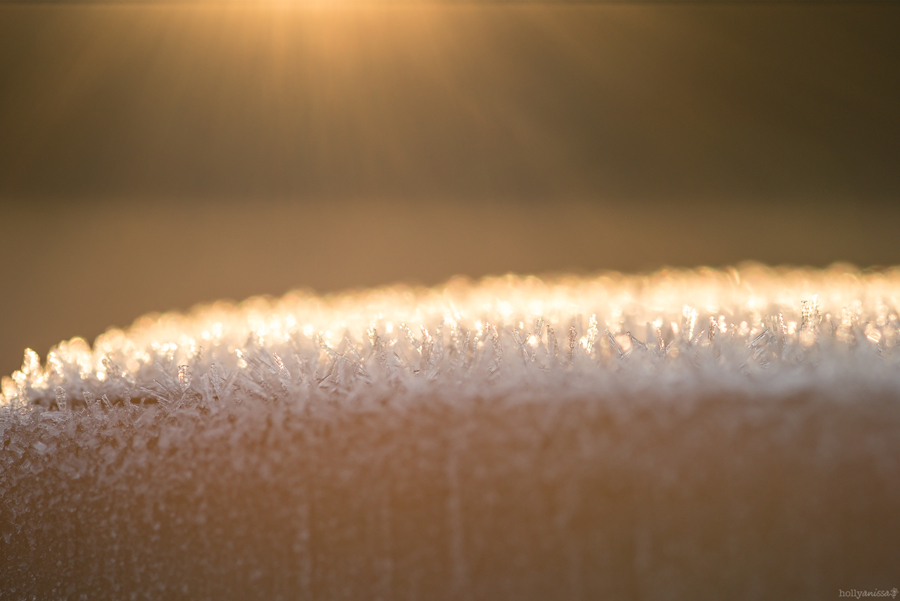
For this image, I was taking lots of images of this caterpillar. Initially, I locked focus on his eyes, then I held my thumb on the AF-ON button continually to track him as he moved through the frame.
![]()
You really need to understand auto-focus modes and auto-focus (point selection) areas to fully realize the impact of this power.
So much talk about auto focus… manual focus… focus modes… focus areas… I’m confused?! (You can skip this part if you understand AF modes and AF areas.)
Auto Focus or Manual Focus: determines if you focus your lens or if your camera focuses your lens.
M/A vs M (Nikon) or AF vs MF (Canon). This is the switch on your lens that will tell your camera whether you are allowing the camera to choose focus (auto and/or manual) or you are moving the focus ring on the lens to achieve focus (manual only).
For BBF, always have it on auto-focus (M/A or AF).
Auto Focus Modes: the mode in which your camera determines how it is going to focus.
For the normal shutter release auto-focus, the modes are (Nikon/Canon):
~AF-S/One Shot AF (single shot): focuses on a single point and stays there while the shutter is partway depressed; you have to choose the focal point each and every time you depress the shutter button and you can only lock your focus once per use.
~AF-C/AI Servo AF (continuous): focuses on your active focal point and keeps that subject in focus as it moves through the frame while the shutter is partway depressed; keeps focus locked on whatever is your active focal point as it moves through the frame.
~AF-A/AI Focus AF (automatic): your camera decides where the focal point is supposed to be while the shutter is partway depressed.
~M (manual): you use your focus ring and manually focus your lens.
For BBF, you must keep your camera in AF-C/AI Servo AF mode and for Nikon you must have AF-C priority selection set to Release (option a1 in the custom settings menu). When the AF-ON button is pressed once and released, it acts as AF-S/One Shot. When the AF-ON button is pressed and held continuously, it acts as AF-C/AI Servo!
Note: for Nikon this will disable the AF-Assist lamp as it functions in AF-S mode.
Each camera model has a different way to change these modes, even within the same brand. Please read your manual to see your options for changing your auto focus mode.
Auto Focus Areas/AF Point Selection: the area in which your camera determines where it is going to focus.
The modes are (Nikon/Canon):
~Single-point AF/Manual AF Point: just like the AF-S mode, the only point on which your camera is focused is the one you choose. Useful for portraits (focus on the closest eye), static subjects and unchanging lighting conditions.
~<no Nikon equivalent>/Spot AF Point: like Manual but more focused within the active focal point. Useful for macro detail.
~Dynamic-area AF (9), (11), (21), (51), or (51) 3D Tracking depending on your model/<no Canon equivalent>: you can still choose one focal point as a starting point, but with 9 or 11 as backup, it will keep your subject in focus if it moves suddenly or erratically. Choose 21 or 51 if you don’t have good contrast for detecting focus. The 51-point 3D Tracking uses color information to assist in detecting focus, especially useful for fast moving subjects.
~Auto-area AF/Automatic AF Point: the camera decides the focus area by using color information and face detection to determine the best focal point(s). Also good for using in Live View mode.
~Group-area AF/Zone AF: the camera focuses using a group of five focus points that you select (not available on all models). This mode is useful for subjects that are difficult to photograph using a single focus point.
For BBF, choosing your AF area mode depends on what you are shooting. If shooting action, you will want dynamic area or zone. For still life, portraits, and landscapes, you will want single point AF/manual AF; you choose exactly which of the many focal points available to use. I tend to not use the auto AF at all… the camera does not usually choose the focal point(s) that I would and I like having full control but it is useful for beginners to get started. For my BBF settings on my D750, I almost always choose my initial focal point and have my focus area set to 3D Tracking. I still have the flexibility of single point AF but by keeping my AF-ON button depressed can easily track a moving subject without having to switch modes.
Each camera model will offer slightly different auto-focus area modes; the entry-level models may not offer 51 or 61 possible focal points and some models may not offer face detection in auto-modes. Each camera model has a different way to change these focus areas, even within the same brand. Please read your manual to see your options for changing your auto focus areas.
So where do you find the option for setting up BBF in your camera’s menu? Your best bet is to… you guessed it… read your manual! Here are a few basics.
How to set up BBF on your camera.
Nikon
Nikon D800 series (and other models that have a dedicated AF-ON button):
Menu>Custom Setting Menu>a Autofocus>a4 AF Activation>AF-ON only>OK.
Nikon D750 and other models that do not have a dedicated AF-ON button:
Menu>Custom Setting Menu>f Controls>f4 Assign AE-L/AF-L button>AF-ON>OK.
Nikon D5000 series (have to reassign another button just like the D750):
Menu>Custom Setting Menu>f Controls>f2 Assign AE-L/AF-L button>AF-ON>OK.
Canon
In general your path will look like this:
Menu>Custom Functions (C.Fn)> C.Fn __: Operation/Others, press Set.
Custom Function 1: Shutter Button/AF-ON Button. To activate BBF, select option _: AE lock/Metering+AF Start. Press Set>option _>Set.
EOS Rebel T3: C.Fn 7 (option 1 or 3)
EOS Rebel T3i: C.Fn 9 (option 1 or 3)
EOS Rebel T4i: C.Fn 6 (option 1 or 3)
EOS 50D: C.Fn IV-1 (option 2 or 3)
EOS 60D: C.Fn IV-1 (option 1, 2, 3, or 4)
EOS 7D: C.Fn IV-1 (Custom Controls — Shutter, AF-ON, AEL buttons)
EOS 6D: C.Fn III-5 (Custom Controls — Shutter, AF-ON, AEL buttons)
EOS 5D Mark II: C.Fn IV-1 (option 2 or 3)
EOS 5D Mark III: C.Fn menu screen 2 (Custom Controls — Shutter, AF-ON, AEL buttons)
EOS-1D Mark IV: C.Fn IV-1 (option 2 or 3)
EOS-1D X: C.Fn menu screen 5 (Custom Controls — Shutter, AF-ON, AEL buttons)
*Now do you remember how I mentioned that you can assign the act of focusing to any button on your camera? It’s true! When holding my D750 in portrait orientation, I find using the AE-L/AF-L back button to be clumsy, so I also assigned the Fn button on the front of my camera to also lock focus:
Menu>Custom Setting Menu>f Controls>f2 Assign Fn button>AF-ON>OK.
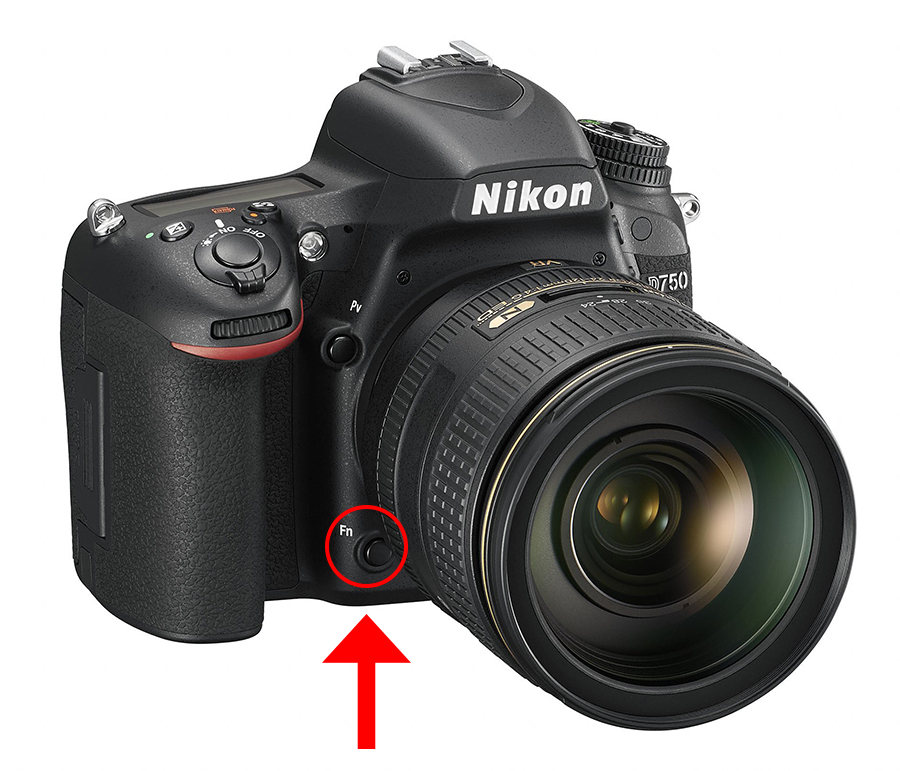 Camera image source: nikonusa.com
Camera image source: nikonusa.com
You will have to explore your camera’s menu options and all of the programmable buttons to discover what feels ergonomically best to you.
I have to admit that I kept depressing my shutter button to achieve focus for about a week after changing it to BBF and thought, “Why is my camera not focusing???” D’oh! It takes some practice, so don’t change your settings right before an important shoot. Practice with it and see what you think. I would love to know if you give BBF a try and see if you find it as liberating and useful as I have.
Thanks for reading!
 Holly Thompson
Holly Thompson
Holly used to be a project manager and technical writer, then she had Anna, her little girl with multiple special needs. That was in 2001 and in the jumble of doctor’s appointments and therapy sessions, ARD meetings and IEP goals, she discovered photography, digital art, and blogging ~ avenues in which to express and create the magical side of life… one of connections, relationships, and beauty. Her search for tranquility is often elusive but she finds the journey to be very rewarding.
Currently, Holly is focused on shooting personal projects with her family as well as expanding her fine art portfolio. Serving the Central Texas area, she accepts commissioned clients for on-location and in-home portrait and lifestyle photography specializing in newborns, children, and family photography. She is a proud team member for The Photographer Within, photographer for Getty Images, and a volunteer photographer with The F.I.L.M. Project which offers free sessions to families touched by cancer.
Tags: back button focus, BBF for Canon, BBF for Nikon, photography tutorial
Categorized in: From the team, Guest Bloggers, Tips & Tricks

3 Comments
Hands down, the best article on BBF I’ve read! thank you!
HOLLY!!!! This is so helpful! I used BFF with my entry-level Nikon when I was first learning and my son was a wild two-year-old. When I upgraded my camera, I never took the time to figure out how to set up BFF. Now that my daughter is a wild two-year-old, I need BFF in my life again! I was easily able to adjust my settings after reading this article. Thanks so much!!!
THANK YOU for including that you have to hold down the button for it to do continuous. I was wondering what I have been doing wrong for a month now (newbie) and now it makes so much sense. Thank you!